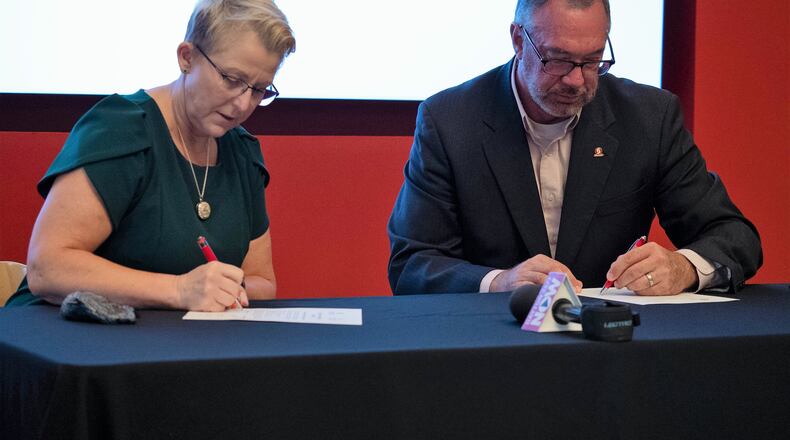Students who have finished an associate’s degree at Sinclair and want to pursue a bachelor’s degree can do so in more than 60 programs, according to a press release from Wright State.
“This program is about expanding the pathways between Wright State University and Sinclair to provide seamless student transitions between our institutions and provide clearer pathways to achieving a high-quality and affordable four-year bachelor’s degree,” Edwards said.
The partnership is part of the Wright Path program, which allows Wright State to work with local community colleges such as Sinclair, Clark State College, Edison State Community College, Cincinnati State Technical and Community College.
“The signing of this new agreement strengthens Sinclair’s long-standing partnership with Wright State to provide exceptional, affordable education and training for our students,” Johnson said.
Sinclair students who participate in the Wright Path Partnership can earn their bachelor’s degree at Wright State at nearly half the cost of a traditional four-year degree, Wright State said. For example, Wright Path students from Sinclair who are pursuing a bachelor’s in information technology and cybersecurity at Wright State will save more than $19,500 in tuition.
Sinclair’s Wright Path students are also eligible for transfer scholarships of between $3,00 and $3,500 per year, which are renewable for three years.
Over the past five years, nearly 4,500 students have transferred from Sinclair to Wright State University, Sinclair officials said. During the same timeframe, 4,400 Wright State students transitioned to Sinclair to continue their studies.
Almost 20,000 students in 20 years have benefitted from enrolling between Sinclair and Wright State, Sinclair said.
Wright State and Sinclair said the institutions are also working on strategies to increase enrollment and completion of credentials and degrees for marginalized populations. The strategies include: increased FAFSA completion rates, increased admission rates to Sinclair and Wright State from high poverty school districts and more support to help students navigate the college experience.
About the Author

